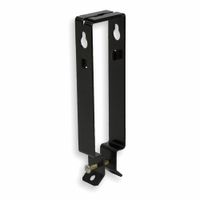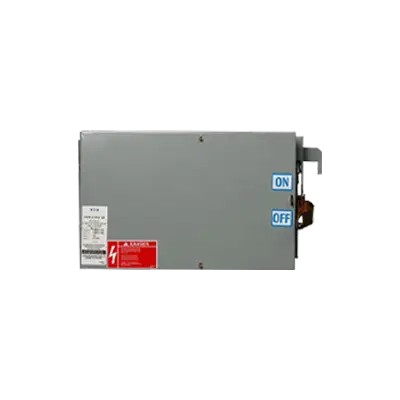Call +(254) 703 030 000 / 751 483 999 / 721 704 777
.....Read More
Frequently Asked Questions
What is a busway and how does it work?
A busway, also known as a bus rapid transit (BRT) corridor, is a dedicated lane or roadway designed exclusively for buses to improve the efficiency and reliability of public transportation. It separates buses from general traffic, reducing delays caused by congestion and allowing for faster travel times.
Busways can be implemented in various forms, such as physically separated lanes on existing roads, elevated structures, or completely separate roadways. They often feature priority at intersections, with traffic signals that favor buses, and may include features like bus-only turn lanes and queue jump lanes to further enhance speed and efficiency.
Key components of a busway system include:
1. **Dedicated Lanes**: These lanes are reserved for buses, preventing interference from other vehicles and ensuring smooth flow.
2. **Stations**: Busway stations are typically spaced further apart than regular bus stops, similar to train stations, to minimize stopping frequency and speed up travel.
3. **Vehicles**: BRT systems often use high-capacity, articulated buses that can carry more passengers and have multiple doors for quick boarding and alighting.
4. **Fare Collection**: Off-board fare collection systems are commonly used to reduce boarding times, allowing passengers to pay before entering the bus.
5. **Intelligent Transportation Systems (ITS)**: These include real-time passenger information, GPS tracking, and traffic signal priority to enhance service reliability and passenger experience.
Busways are designed to offer a high-quality transit experience similar to light rail or metro systems but at a lower cost and with greater flexibility. They aim to provide a fast, efficient, and reliable alternative to private car travel, reducing traffic congestion and promoting sustainable urban mobility.
What are the advantages of using busway systems over traditional cable and conduit?
Busway systems offer several advantages over traditional cable and conduit:
1. **Space Efficiency**: Busways require less physical space compared to bulky cable trays and conduits, allowing for more efficient use of space in buildings and industrial settings.
2. **Flexibility and Modularity**: They are highly adaptable, allowing for easy modifications and expansions. Busways can be quickly reconfigured to accommodate changes in layout or load requirements without extensive rewiring.
3. **Ease of Installation**: Busways are easier and faster to install than traditional cabling systems, reducing labor costs and installation time. They come in pre-fabricated sections that can be easily assembled on-site.
4. **Reduced Material Costs**: The use of busways can lower material costs as they require fewer support structures and less copper compared to traditional cabling.
5. **Improved Safety**: Busways offer enhanced safety features, such as enclosed conductors that reduce the risk of electrical shock and fire hazards. They also provide better protection against environmental factors like moisture and dust.
6. **Higher Current Capacity**: Busways can handle higher current loads more efficiently than cables, making them suitable for applications requiring significant power distribution.
7. **Aesthetic Appeal**: With a cleaner and more organized appearance, busways contribute to a more aesthetically pleasing environment, especially in commercial and office settings.
8. **Maintenance and Accessibility**: Busways allow for easier access for maintenance and troubleshooting, as they are typically installed in accessible locations and do not require dismantling of walls or ceilings.
9. **Energy Efficiency**: They offer lower electrical resistance and reduced energy losses compared to traditional cabling, contributing to overall energy efficiency.
10. **Longevity and Durability**: Busways are designed to withstand harsh conditions and have a longer lifespan, reducing the need for frequent replacements.
How do you install a busway system?
1. **Planning and Design**: Assess the electrical load requirements and layout. Design the busway system to accommodate current and future needs, considering factors like voltage, current capacity, and environmental conditions.
2. **Site Preparation**: Ensure the installation site is clean, dry, and free from obstructions. Verify that the structural supports can handle the weight and configuration of the busway.
3. **Safety Measures**: Implement safety protocols. De-energize existing electrical systems and use personal protective equipment (PPE).
4. **Component Inspection**: Inspect all busway components for damage or defects. Check for proper ratings and compatibility with the system design.
5. **Mounting Supports**: Install mounting brackets or hangers according to the design specifications. Ensure they are level and securely fastened to the building structure.
6. **Busway Assembly**: Begin assembling the busway sections. Align and connect each section using the manufacturer’s specified joint kits or connectors. Ensure proper torque settings for bolts and connections.
7. **Alignment and Leveling**: Verify that the busway is straight and level. Adjust as necessary to prevent stress on the joints and ensure efficient operation.
8. **Connection to Power Source**: Connect the busway to the main power source. Ensure all connections are secure and comply with electrical codes.
9. **Testing and Inspection**: Conduct electrical tests, such as insulation resistance and continuity tests, to ensure proper installation. Inspect for any signs of misalignment or loose connections.
10. **Commissioning**: Energize the system and monitor for any irregularities. Verify that the busway operates within the specified parameters.
11. **Documentation and Handover**: Provide detailed documentation, including as-built drawings and maintenance instructions, to the facility management team. Conduct a final walkthrough to ensure all components are correctly installed and operational.
What are bus plugs and how do they function?
Bus plugs are electrical devices used to distribute power from a busway system to various equipment and machinery in industrial and commercial settings. They are part of a busway system, which consists of bus bars enclosed in a protective casing, providing a flexible and efficient method of power distribution.
Functionally, bus plugs connect to the busway, allowing power to be tapped off and directed to specific locations. They contain circuit protection devices such as fuses or circuit breakers to safeguard the connected equipment. Bus plugs can be easily installed or removed, enabling quick reconfiguration of power distribution without significant downtime.
Bus plugs typically consist of a housing that encloses the electrical components, a plug-in interface that connects to the busway, and an outlet or terminal for connecting to the load. They are designed to handle various voltage and current ratings, accommodating different power requirements.
The primary advantage of bus plugs is their flexibility. They allow for easy expansion or modification of power distribution systems, making them ideal for environments where equipment layout frequently changes. Additionally, they enhance safety by providing localized circuit protection and reducing the need for extensive wiring.
In summary, bus plugs are essential components in busway systems, providing a versatile and efficient means of distributing electrical power in industrial and commercial settings. They offer flexibility, safety, and ease of installation, making them a preferred choice for dynamic power distribution needs.
How do you choose the right busway and bus plugs for your facility?
To choose the right busway and bus plugs for your facility, consider the following factors:
1. **Load Requirements**: Determine the total electrical load and future expansion needs. This ensures the busway can handle current and future demands.
2. **Voltage and Current Ratings**: Select busways and plugs that match the voltage and current requirements of your equipment.
3. **Environment**: Consider environmental conditions such as temperature, humidity, and exposure to chemicals or dust. Choose busways with appropriate IP or NEMA ratings for protection.
4. **Configuration and Layout**: Assess the facility layout to determine the optimal busway configuration, including straight sections, elbows, and tees, to minimize installation complexity and cost.
5. **Flexibility and Modularity**: Opt for systems that allow easy reconfiguration and expansion to accommodate changes in facility layout or equipment.
6. **Installation and Maintenance**: Evaluate ease of installation and maintenance. Systems with plug-and-play features reduce downtime and labor costs.
7. **Safety and Compliance**: Ensure the busway system complies with local electrical codes and standards, such as UL, IEC, or NEC, to ensure safety and reliability.
8. **Cost**: Balance initial costs with long-term benefits. Consider total cost of ownership, including installation, maintenance, and energy efficiency.
9. **Manufacturer Support**: Choose reputable manufacturers that offer technical support, warranties, and readily available spare parts.
10. **Compatibility**: Ensure bus plugs are compatible with existing equipment and busway systems to avoid integration issues.
By carefully evaluating these factors, you can select a busway and bus plugs that meet your facility's operational, safety, and budgetary requirements.
What are the safety considerations when using busway systems?
1. **Structural Integrity**: Ensure the busway system is designed and installed according to relevant standards and codes to prevent mechanical failure.
2. **Electrical Safety**: Regularly inspect for insulation degradation, overheating, and proper grounding to prevent electrical hazards such as shocks or fires.
3. **Overcurrent Protection**: Use appropriate circuit breakers and fuses to protect against overcurrent conditions that could lead to overheating or fire.
4. **Environmental Conditions**: Consider environmental factors such as moisture, dust, and temperature, which can affect the performance and safety of the busway.
5. **Load Capacity**: Ensure the busway is not overloaded beyond its rated capacity to prevent overheating and potential failure.
6. **Maintenance and Inspection**: Implement a regular maintenance schedule to check for wear and tear, loose connections, and other potential issues.
7. **Fire Safety**: Use fire-resistant materials and ensure the busway is part of the building's fire safety plan, including proper compartmentalization and fire stops.
8. **Clearance and Accessibility**: Maintain adequate clearance around the busway for heat dissipation and ensure it is accessible for maintenance and emergency situations.
9. **Mechanical Protection**: Protect the busway from physical damage due to external impacts or vibrations, especially in high-traffic areas.
10. **Labeling and Documentation**: Clearly label all components and maintain accurate documentation for installation, maintenance, and emergency procedures.
11. **Training and Awareness**: Ensure personnel are trained in the safe operation and maintenance of the busway system and are aware of emergency procedures.
12. **Compliance and Standards**: Adhere to local and international standards and regulations to ensure the busway system is safe and compliant.
Can busway systems be used in residential applications?
Yes, busway systems can be used in residential applications. Busways, also known as bus ducts, are prefabricated electrical distribution systems that consist of a metal enclosure containing copper or aluminum busbars. They offer several advantages that make them suitable for residential use:
1. **Flexibility and Modularity**: Busway systems are highly adaptable, allowing for easy modifications and expansions. This is beneficial in residential settings where electrical needs may change over time due to renovations or the addition of new appliances.
2. **Space Efficiency**: Busways require less space compared to traditional wiring methods. This is particularly advantageous in residential buildings with limited space, as they can be installed in tight areas without compromising performance.
3. **Safety**: Busways are designed with safety features such as insulated busbars and protective enclosures, reducing the risk of electrical hazards. This is crucial in residential environments to ensure the safety of occupants.
4. **Aesthetic Appeal**: The compact and streamlined design of busways can be more aesthetically pleasing than bulky conduits and cables, making them suitable for modern residential designs where appearance is important.
5. **Ease of Installation and Maintenance**: Busways are easier and quicker to install than traditional wiring systems, reducing labor costs and installation time. They also simplify maintenance, as sections can be easily accessed and replaced without extensive disruption.
6. **Energy Efficiency**: With lower electrical losses compared to conventional wiring, busways can contribute to energy savings in residential applications, aligning with the growing demand for energy-efficient solutions.
While traditionally used in industrial and commercial settings, the benefits of busway systems can be effectively leveraged in residential applications, particularly in multi-unit buildings or homes with complex electrical requirements.

